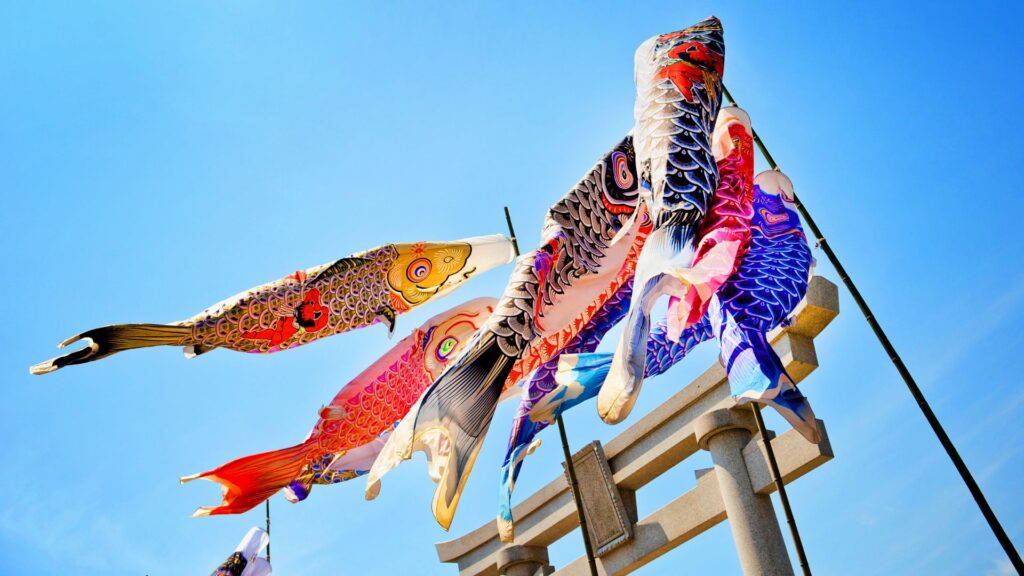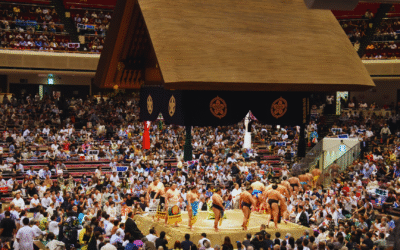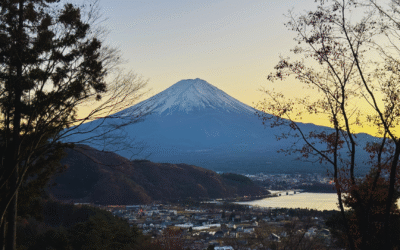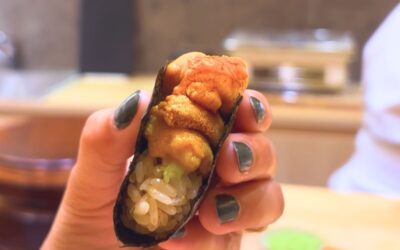May in Japan is when spring really settles in. The cherry blossoms have mostly faded in the big cities, but if you head north or into higher areas, you can still catch some of those soft pink petals hanging on. At the same time, the trees and parks are turning a deep, vibrant green. It’s warm but not too hot, and there’s a light, fresh feeling in the air, perfect for being outside.
The first week of the month is Golden Week, a series of national holidays that gives a lot of people time off. Trains, planes and popular spots get busy, but it’s also a fun and festive time to be in Japan. Families travel, friends meet up, and loads of places host special events, markets, or seasonal celebrations.
During late spring in Japan, you can go hiking, take a slow stroll through a quiet town, visit gardens and temples, or just chill somewhere new for a change of pace. May is a great time to explore and enjoy the calm before the summer heat kicks in. The sakura crowds are gone, the air feels fresh, and there’s something peaceful about this in-between season. Keep reading to learn why we think May might be the best month to visit Japan.
Golden Week in Japan: Travel, Traditions & Spring Break Vibes
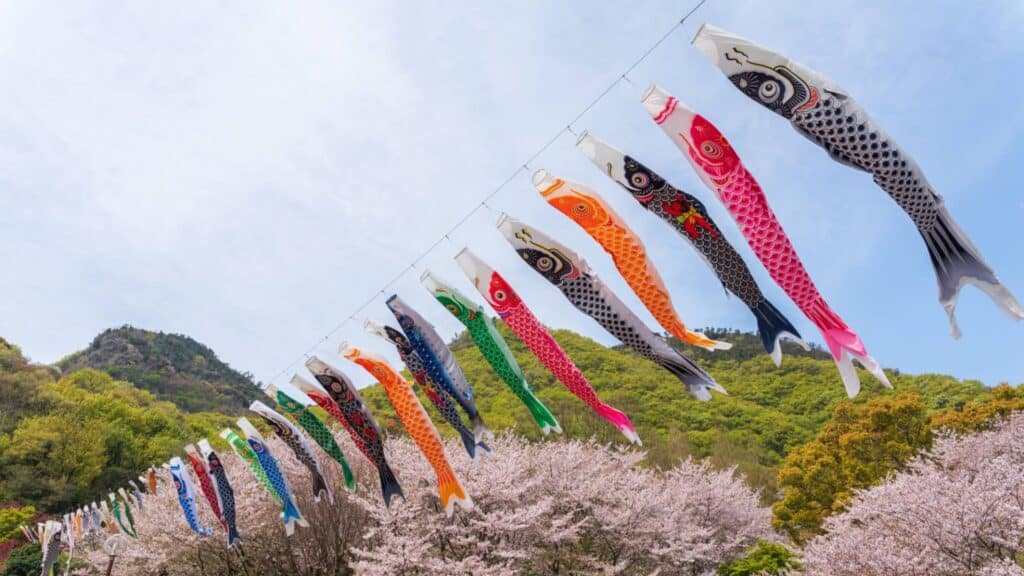
Golden Week is one of the busiest and most exciting times to be in Japan. Running from late April into early May, it’s a cluster of national holidays that pretty much guarantees time off for most people. The main holidays include Showa Day (April 29), Constitution Memorial Day (May 3), Greenery Day (May 4), and Children’s Day (May 5). When they fall just right, people can score an entire week—or more—off work and school.

During Golden Week, the whole country gets moving. Popular spots like Kyoto, Tokyo, and Hakone fill up fast, and trains and bullet trains are often booked out well in advance. Airports are buzzing, too, with locals travelling both within Japan and abroad. But it’s not just about travel—there’s also a ton of local fun happening. Parks and temples hold special events, shopping areas have big sales, and you’ll find seasonal food stalls selling everything from grilled mochi to festival sweets.
It’s a high-energy, colourful time of year, but it can get crowded—so if you’re planning to travel during Golden Week, it’s smart to book early. Or, if you prefer something more relaxed, head to smaller towns or rural areas for a quieter (but still festive) vibe.
Popular May Events Around Japan
Tokyo: Sanja Matsuri
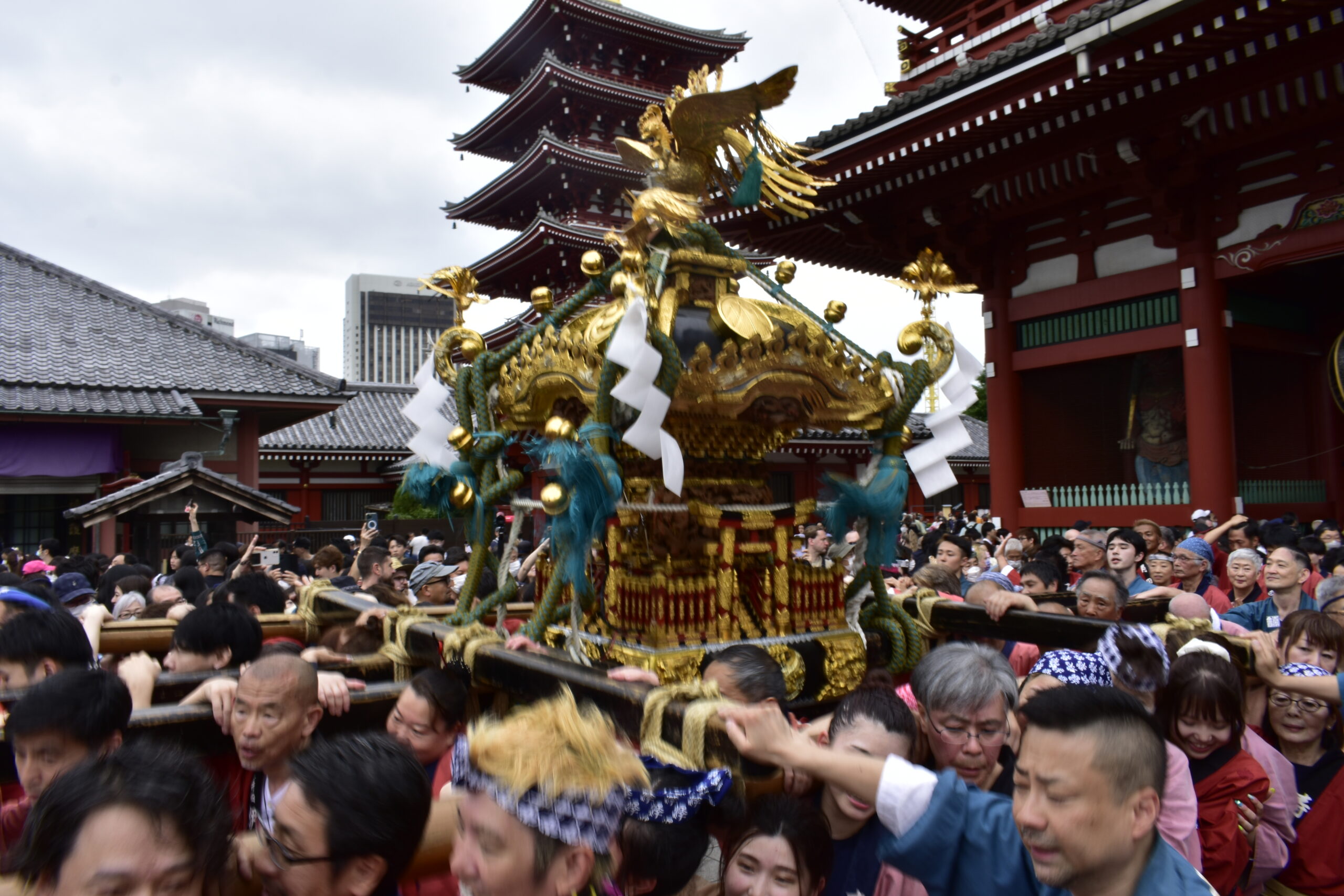
Held over three days in mid-May, Sanja Matsuri is one of Tokyo’s liveliest and most energetic festivals. It takes place in Asakusa, centred around the famous Senso-ji Temple, and celebrates the three men who founded the temple. What really makes this festival stand out is the sheer number of people and the intensity of the atmosphere—millions of visitors pour into the area, and over a hundred mikoshi (portable shrines) are carried through the streets by teams of shouting, chanting locals. It’s loud, crowded, a little chaotic, and totally electric.
The whole neighbourhood turns into a party, with food stalls, taiko drumming, traditional dance, and everyone from kids to grandparents getting in on the action. Sanja Matsuri has a real sense of community spirit, mixed with that classic Tokyo edge—fast-paced, bold, and full-on. If you’re in the city in May and want to experience a proper Japanese festival in all its noisy, joyful glory, this is the one to see. Just be ready for the crowds, and don’t forget your camera—there’s a lot going on.
Kyoto: Aoi Matsuri

Held every year on May 15th, Aoi Matsuri is one of Kyoto’s oldest and most graceful festivals. It dates all the way back to the 6th century and is known for its stunning procession of people dressed in full Heian-period attire. Think flowing silk robes, elaborate headpieces, and ox-drawn carts—it’s like watching a real-life scene from ancient Japan. The parade starts at the Kyoto Imperial Palace and winds its way through the city to Shimogamo and Kamigamo Shrines, two of Kyoto’s most important historic sites.
Unlike some of the louder, more energetic festivals, Aoi Matsuri has a calm and dignified atmosphere. It’s less about big crowds and food stalls and more about history and elegance. That said, it still draws a lot of attention from both locals and visitors, so the streets do get busy. It’s a great chance to see a very traditional side of Kyoto, especially if you’re into cultural heritage and love soaking up a bit of the city’s classical charm.
Osaka: Sumiyoshi Shrine Rice Planting Festival

Held every May at Sumiyoshi Taisha, one of Osaka’s oldest shrines, the Rice Planting Festival is a unique mix of ritual, performance, and community tradition. It’s a Shinto ceremony that blesses the upcoming rice harvest, and it involves real rice planting done in a specially prepared field on the shrine grounds. What makes it so special is the added layer of traditional music, dancing, and even sumo wrestling as part of the day’s events. The women planting the rice wear brightly coloured kimono, and their movements are accompanied by rhythmic chants and court music.
It might not have the huge crowds or parade floats you’ll see in bigger festivals, but Taue-shinji feels authentic and deeply connected to local life. It gives a glimpse into Japan’s agricultural roots and shows how spiritual life and farming traditions are still intertwined. It’s a slower-paced experience but definitely one that leaves a lasting impression—especially if you’ve never seen anything like it before.
Sapporo: Lilac Festival
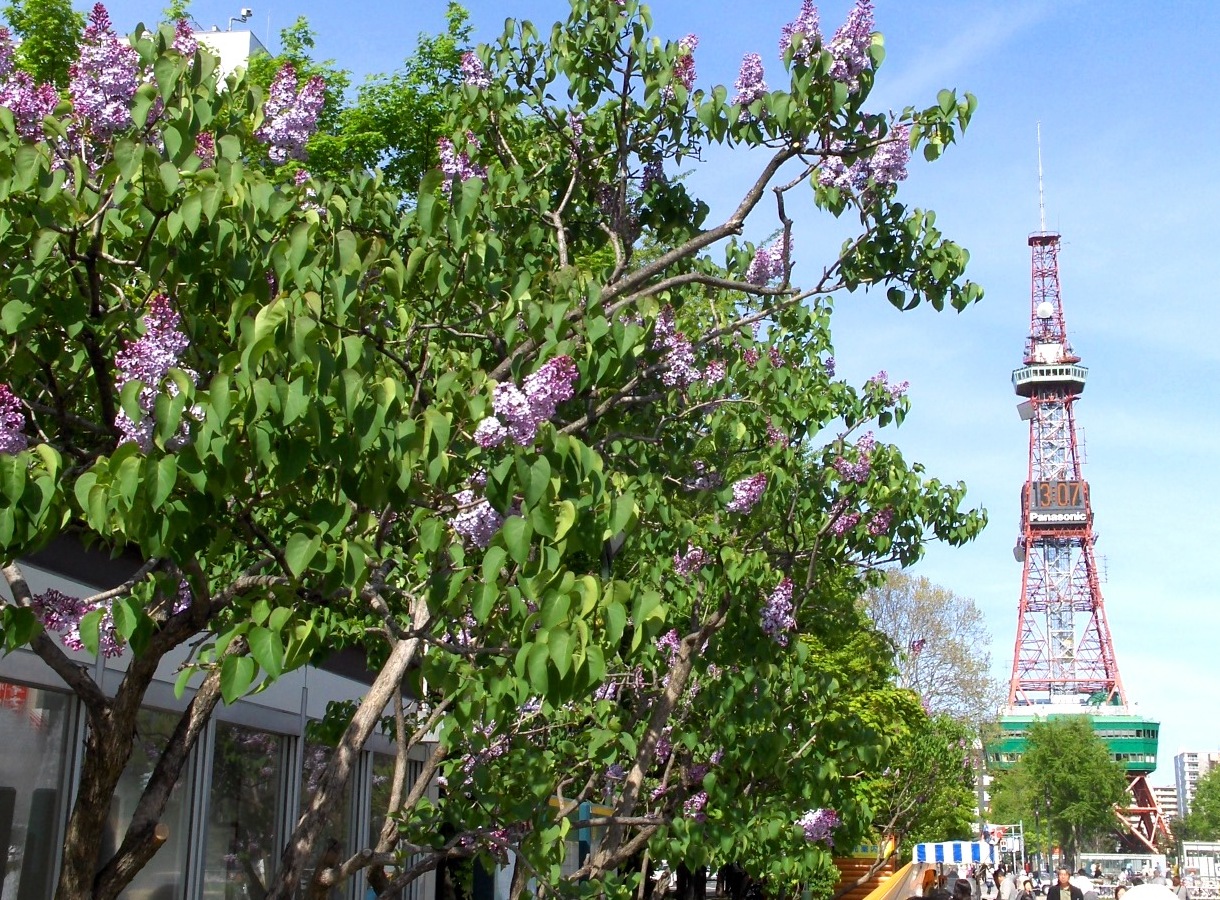
In Sapporo, spring arrives fashionably late, and by mid to late May, the city starts to wake up with colour. The Lilac Festival is one of the first signs that warm weather has finally arrived in Hokkaido. It takes place mainly in Odori Park, where over 400 lilac trees bloom in soft shades of purple, pink, and white. The whole park smells amazing, and there’s a relaxed, happy energy in the air. Locals come out to enjoy the fresh air, grab bites from food stalls, and take part in small events like outdoor concerts, tea ceremonies, and even wine tastings.
It’s not a massive festival, but that’s part of its charm. The pace is slower, the crowds are more local, and it’s all about enjoying the simple things—flowers, food, and sunshine. If you’re visiting Hokkaido in May, it’s the perfect excuse to wander around the city, sip something tasty in the park, and just take it easy. After the long winter, Sapporo really comes alive, and the Lilac Festival captures that feeling perfectly.
May Cuisine: Fresh Flavours and Early Summer Treats
Shincha: The First Tea of the Season

May marks the arrival of shincha, or “new tea,” made from the very first harvest of the year’s tea leaves. This early green tea is known for its fresh, slightly sweet flavour and lower bitterness compared to regular sencha. It’s a seasonal favourite among tea lovers, and you’ll find it featured in everything from tea houses and department stores to limited-edition snacks and sweets. Many tea-growing regions like Shizuoka and Uji celebrate with local tea festivals, offering tastings, tea-picking experiences, and loads of tea-based goodies.
Alongside sipping it straight, you might see shincha used in desserts too—think green tea cakes, soft-serve ice cream, and delicate wagashi that highlight its smooth, grassy notes. It’s a gentle way to ease into the warmer months, with flavours that feel light, clean, and very “May.”
Fresh Veg, Bamboo Shoots, and Early Summer Seafood
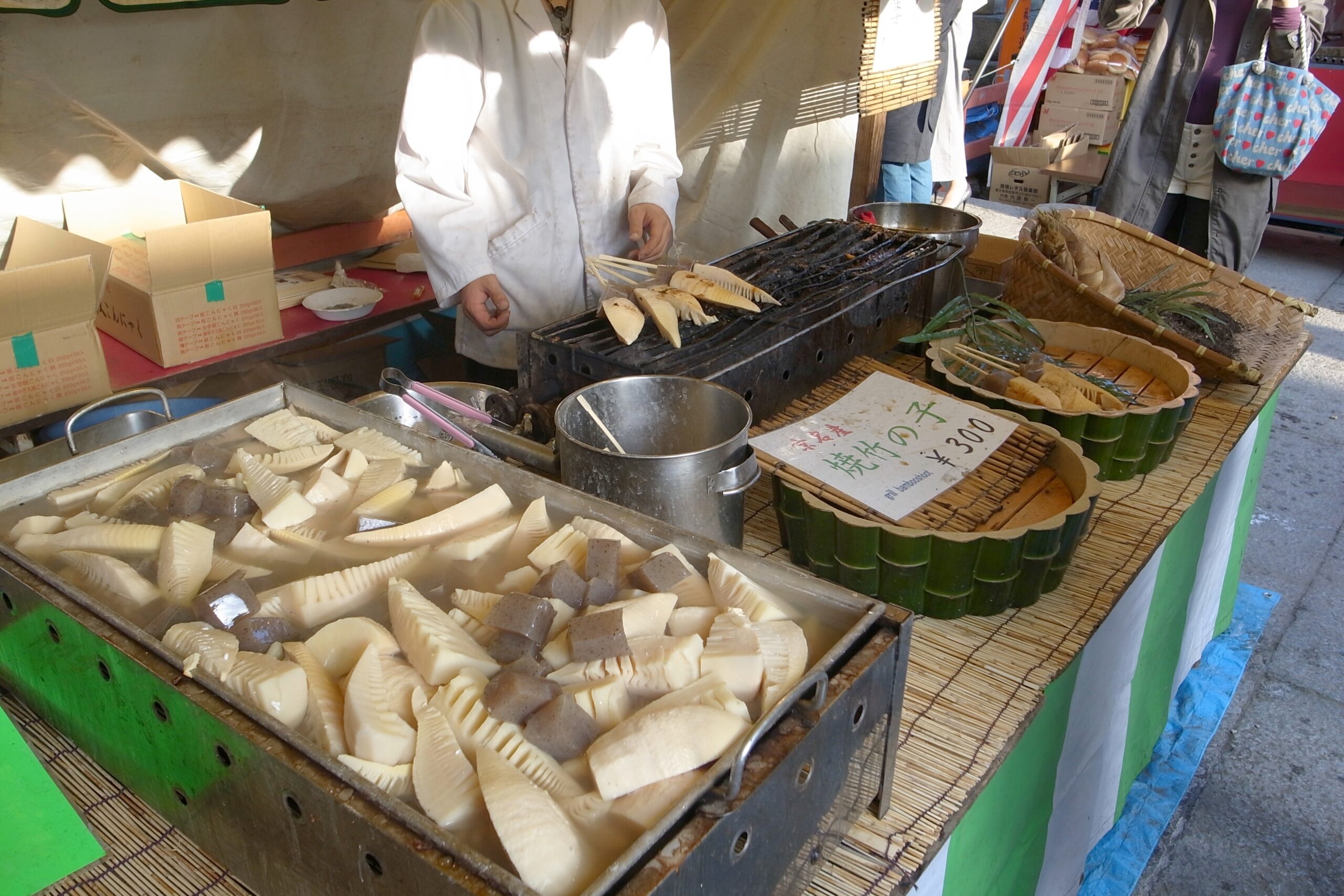
May still has a bit of that spring harvest energy, with seasonal veg like takenoko (bamboo shoots) continuing to shine. They show up in everything from miso soup and rice dishes to grilled skewers and tempura. You’ll also start seeing more early summer produce like soramame (broad beans) and baby onions, often served simply to let the freshness stand out.
Seafood-wise, ayu (sweetfish) starts appearing on menus, especially grilled with a bit of salt and served whole. It’s a classic riverside snack that screams early summer. In coastal regions, you might also spot hotaru ika (firefly squid) still hanging around from April, and katsuo (bonito) starting to show up in seasonal dishes like tataki—lightly seared and served with citrusy ponzu and garlic or ginger.
Golden Week Street Food and Outdoor Eats
With so many people out and about during Golden Week, May is full of opportunities to snack your way through festivals and outdoor events. Food stalls line parks, shrine paths, and public squares, selling classics like yakisoba, okonomiyaki, kakigori (shaved ice, if it’s hot enough!), and all kinds of skewers—chicken, beef, mochi, you name it.
If you’re heading out for a picnic or a hike, you’ll also find loads of seasonal bento options at train stations and convenience stores. These often include seasonal veggies, light fish dishes, pickles, and refreshing desserts like fruit jelly or warabi mochi. Everything feels just a bit lighter and cooler than the richer foods of winter and early spring, setting the tone for summer days ahead.
May Weather in Japan
Central Japan (Tokyo, Kyoto, Osaka): Easygoing Spring Days
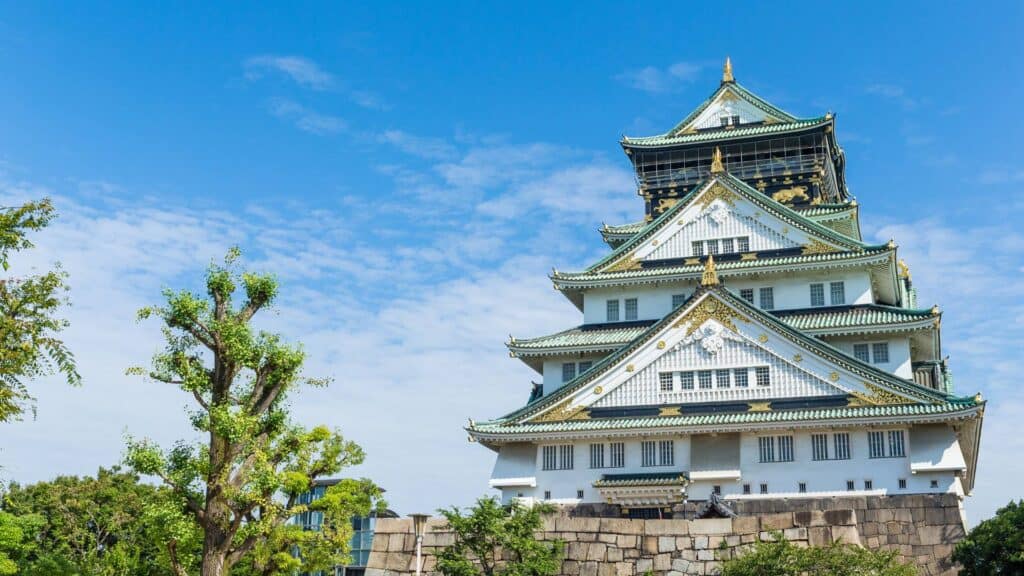
May is one of the most comfortable months to travel in Japan. In cities like Tokyo, Kyoto, and Osaka, daytime temperatures usually sit between 15°C and 25°C (59°F – 77°F), with clear skies and low humidity. It’s the kind of weather that makes you want to be outside all day—perfect for temple hopping, park strolls, or grabbing lunch on a café terrace. Evenings are mild but can still be a bit cool, so a light jacket or long-sleeve layer comes in handy after dark.
Rain is usually light in May, though towards the end of the month you might start to feel the first hints of the rainy season approaching. Nothing too serious yet—just the occasional drizzle—so a small umbrella or rain jacket is good to pack just in case.
Northern Japan (Hokkaido & Tohoku): Late Spring Comes to Life
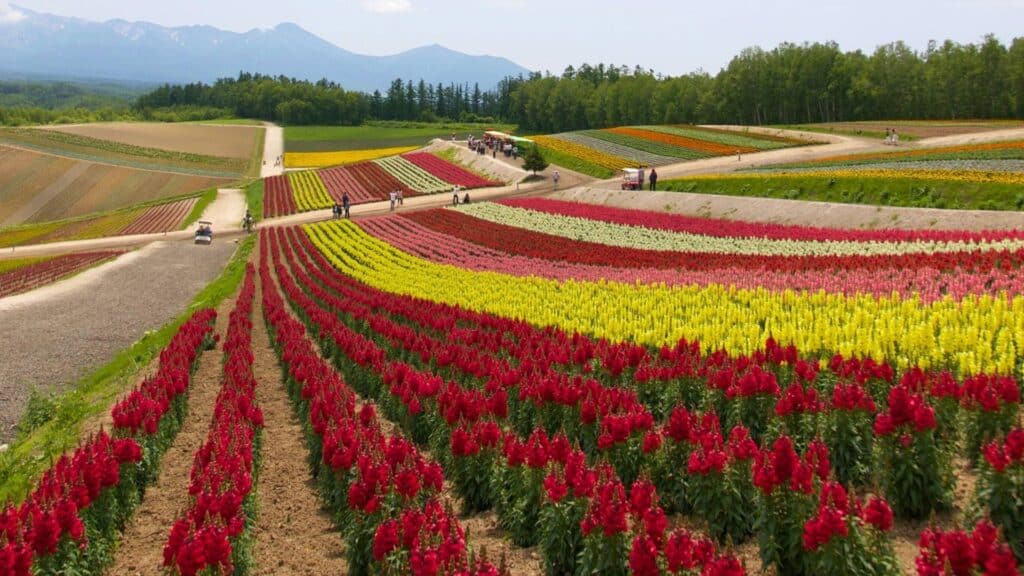
Up north, places like Sapporo, Aomori, and Sendai are just hitting peak spring mode. Temperatures tend to range from 10°C to 20°C (50°F – 68°F), and it’s the start of flower season here—cherry blossoms bloom later in these regions, and parks and gardens start bursting with colour. It’s a great time to visit if you missed the sakura season further south.
The air still feels crisp, especially in the mornings and evenings, so layering is key. A warm jumper or light coat should be enough to keep you comfortable while you explore.
Southern Japan (Kyushu & Okinawa): Almost Summer

In the south, May feels more like early summer. Kyushu sees temps from 18°C to 26°C (64°F – 79°F), while Okinawa can hit highs around 28°C (82°F). It’s warm, sometimes humid, and perfect beach weather down in the islands. You’ll want short sleeves, sunscreen, and maybe even swimwear if you’re planning to hit the water.
Rain becomes more likely the closer you get to June, especially in Okinawa, where the rainy season sometimes starts mid to late May. Even so, there are still plenty of sunny days, and it’s a lovely time for outdoor activities—just keep an eye on the forecast.
Mountain Areas (Nagano, Takayama, Nikko): Cool Mornings, Clear Views
![Where to go in spring in Japan Nakayama Kogen [Nagano Prefecture]](https://flipjapanguide.com/wp-content/uploads/2022/02/Where-to-go-in-spring-in-Japan-Nakayama-Kogen-Nagano-Prefecture-1024x576.jpg)
The Japanese Alps and mountain towns are still a little chilly, especially early in the day. Temps range from 8°C to 20°C (46°F – 68°F), with cool, fresh air that’s great for hiking or just enjoying the scenery. The higher you go, the cooler it gets, so if you’re planning mountain walks or onsen stays, bring layers and good walking shoes.
May is when these areas start to green up, with snow still visible on the peaks but fresh new leaves in the forests below. It’s peaceful, refreshing, and great for a slower-paced escape from the cities.
May in Japan: Fresh Air, Festivals, and a Taste of Early Summer

May in Japan is one of those months that feels just right. The weather is comfortable, the skies are clear, and there’s a sense of calm after the buzz of cherry blossom season. You can still catch the last of the sakura up north, but now the spotlight shifts to lush green landscapes, lively festivals, and peaceful moments outdoors. It’s the kind of month where you can spend all day exploring temples, hiking through forests, or just relaxing in a quiet park with a seasonal snack in hand.
It’s also full of energy in its own way—Golden Week brings a burst of excitement, big cities come alive with tradition and colour, and the food scene is all about fresh tea, spring veggies, and early summer seafood.
If May sounds like your ideal time to visit Japan, we’ve got you covered. From custom travel plans to guided tours that take the stress out of planning, we’re here to help you make the most of this magical time of year.
Ready to plan your May adventure? Check out our Travel Planner or browse our Tours to start your journey today! 🌱

